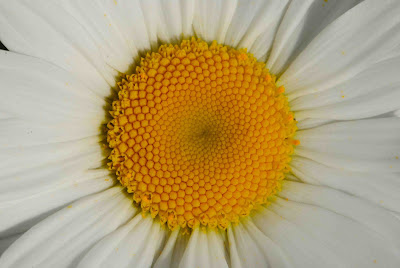Visually, the tall orange spikes of foxtail lilies and the lesser spikes of the yellow baptisia or wild indigo punctuate the garden with strong vertical accents, while the remaining pink peonies are the biggest flowers of all. The sweet-smelling valerian is the tall white flower in the left background above, much more conspicuous for it's fragrance than it's flower.
The foxtail lilies and the baptisia certainly accent the garden, but the close-up of the lily in bloom (below) struck me as the most fascinating picture. The plant blooms slowly from the bottom of the flower spike upwards, and the rusty-brown stamens are strikingly obvious at this distance.
We've also got digitalis in bloom, a gentle pink one, but more will appear in the next few days. You practically have to crawl on the ground to look up into the individual florets.
And this is the valerian, a tall open plant, the tallest well over 6 feet, with few leaves near the top, and umbellifera-like clusters of tiny white flowers. It's taller than anything else, and it also self-seeds easily and widely, so it will soon decorate your garden if you don't control it - or spread and bring its fragrance with it if you choose to let it.
The individual flowers are very tiny - obviously powerful for the fragrance they provide. Individual blossoms might be 1/4 inch across. But at this time of year it's my favourite, because it colours your whole experience every time you walk to the garden.



















































